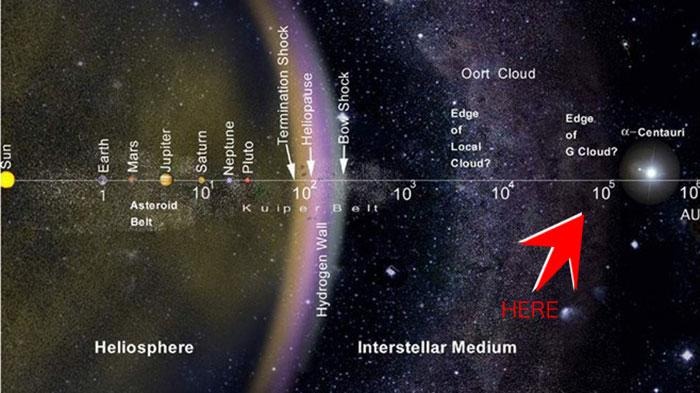A Red Dwarf Buzzed Our Solar System 70k Years Ago
There are always foreign rocks floating in an out of our solar system, but it's particularly rare that a whole star would come anywhere near our sun. That's what happened, according to a group of astronomers from the US, Europe, Chile, and South Africa. This (relatively small) Red Dwarf entered and exited our extended system through the distant cloud of comets known as the Oort Cloud. Not that we noticed it – it happened around 70,000 years ago, well before we were around to see it.
The star – and its low-mass star system – has been nicknamed "Scholz's star." It gets this name from the crew of researchers who published the paper "The Closest Known Flyby of a Star to the Solar System".
Above you'll see an illustration of the star and its brown dwarf flying partner. This image is described thusly by its creator:
"This is an artist's conception of Scholz's star and its brown dwarf companion (foreground) during its flyby of the solar system 70,000 years ago. The Sun (left, background) would have appeared as a brilliant star. The pair is now about 20 light years away. (Credit: Michael Osadciw/University of Rochester)"
Once spotted, the team took radial velocity measurements which shows the star now moving almost directly away from the solar system. While our next closest neighboring star is around 4.2 light years away, this "Scholtz's star" reached inside 0.8 light years away.

The researchers suggest they are 98% certain this star went through our outer Oort Cloud.
This star is moving at extreme speed, moving now further than 20 light years from our sun.
The paper this star is spoken about in can be found in The Astrophysical Journal Letters Volume 800, Number 1. Authors are as follows: Eric E. Mamajek1, Scott A. Barenfeld1, Valentin D. Ivanov, Alexei Y. Kniazev, Petri Väisänen, Yuri Beletsky, and Henri M. J. Boffin.
